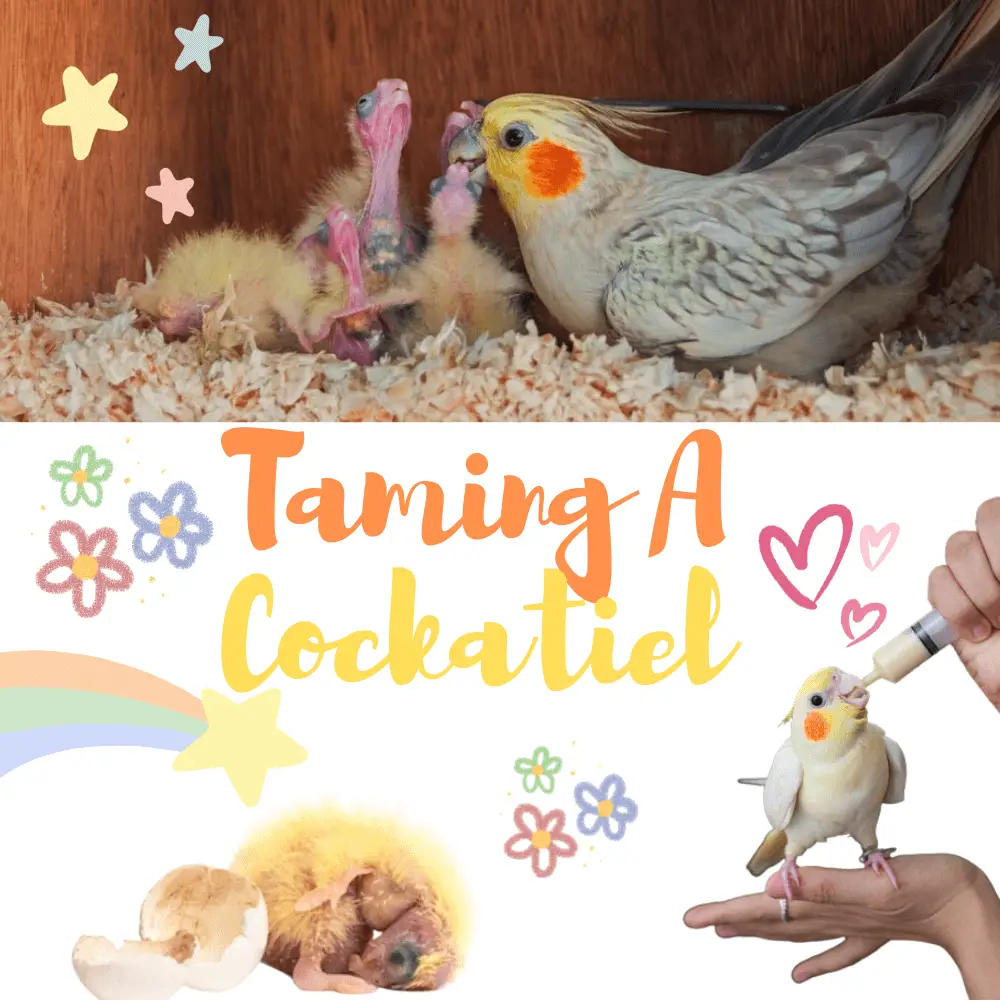
Taming a cockatiel requires first of all gentleness and patience. A cockatiel can be more or less delicate to tame. In the first place, its breeding method can tell you the level of theoretical difficulties you will have to face (I insist on the word “theoretical” because each cockatiel is different): * Hand-raised cockatiels: they are simple at first and then everything is complicated during sexual maturity
Raised by Parents cockatiels:
They often require patience because they have never been handled before
Hand Raised cockatiels:
They are usually the simplest to tame and are well in their paws
In the second place, it is important to respect the gregorian of the cockatiel: in nature, this species of bird lives in a colony with dozens of individuals. She feels a real need to have at her side a congener: always adopt at least two cockatiels. Sex doesn’t matter: you can just as easily adopt two males or two females or even a couple. As long as you do not have a nest box (or anything that can pass for a nest box: cardboard box, maisonette…), you will not normally have reproductions.
Finally, the third crucial point: it is absurd to cut off the wings of a bird to tame it (a method called “joining the wings”)! Methods of cutting the remiges to prevent the bird from flying and forcing contact are cruel in addition to being mostly ineffective. Cornered, no longer able to fly to escape what he considers a predator, the parakeet will bite and will never really give you confidence.
Also know that the regrowth of remiges is a long, tiring, and painful thing for a bird.
Once the cockatiels are present at your home, it will be necessary to give them a time of adaptation: that is to say a period of time of several days during which they will visit their new home and discover their aviary. Do not rush them and do not seek contact at all costs: talk to them through the cage in a soft and calm voice from time to time and then leave it in peace.
You can now take good habits that you will have to respect:
- Learn now what there is to know about the behavior of the cockatiel to know how to decipher their language and not make mistakes
- Never make a sudden gesture in front of your cockatiels
- Do not shout at your cockatiels or scold them: it is useless except to lose confidence with them
- Never force manipulation with your birds and respect the limits they impose on you: if you lose the trust of your cockatiels, you may never get it back. Be patient!
You can then move on to the next phase of taming and enjoy the “belly call”: find the treat that your cockatiels will not be able to resist! Some birds love fruits or vegetables, but for the majority of them, the ultimate treat is the millet cluster!
It is best to start by offering millet through the bars at first, but if your budgies are not the most fierce, you can directly offer the treat by putting your hand inside the cage.
You will have to make as few movements as possible and withdraw after about ten minutes if you notice that the birds refuse to approach. Try to make this moment a real ritual by giving yourself an hour in the day without changing it. Your cockatiel will thus have landmarks.
Once your pets come to eat the treat, you can entice them to land on a perch of your choice by rewarding them (this step is very useful if you want to easily get the birds in and out of your indoor aviary). The last step is to raise the cockatiels on your finger, but it is important to understand that not all birds will accept it.
Some cockatiels will refuse direct contact with the hand all their lives: they will not be wild, but they should not be forced into a contract that they refuse at the risk of losing their trust. Do not forget that a cockatiel lives on average ten or even fifteen years: you have time!
How to Bond and Tame a Scared Cockatiel? Taming Season
SOURCE:Pet Bird Care




















